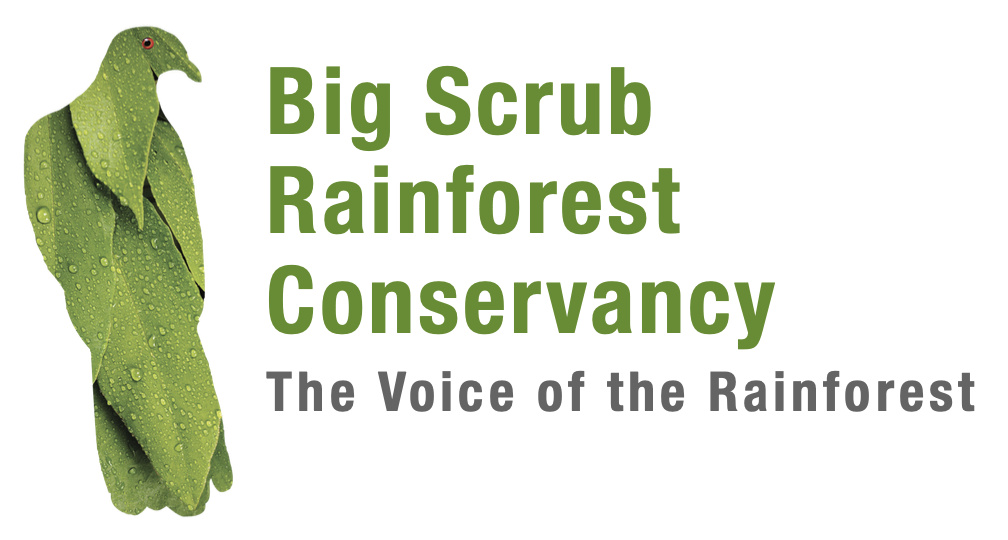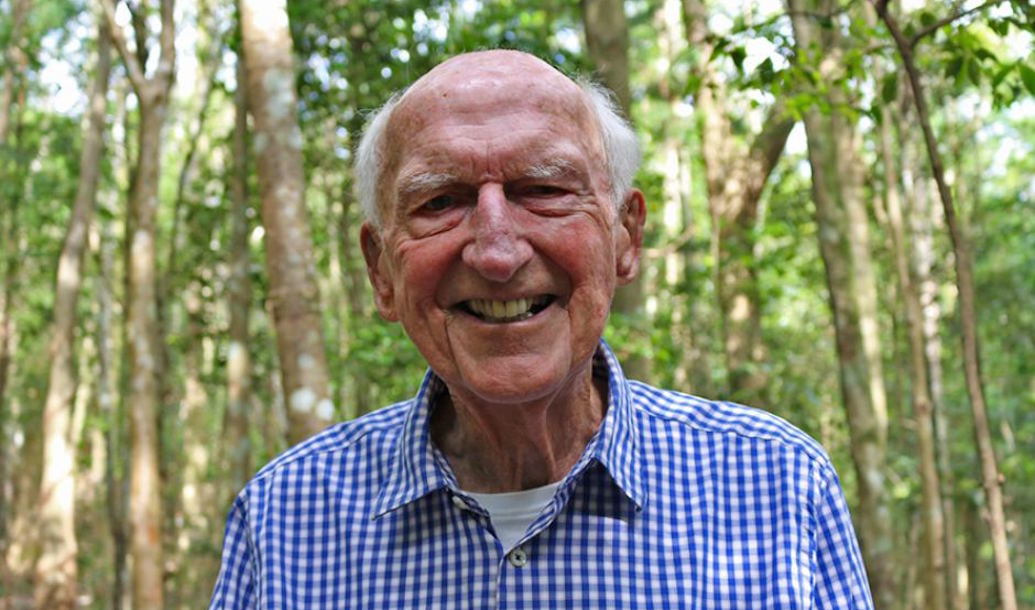From an article by Kim Honan, ABC North Coast
The Big Scrub was once the largest expanse of subtropical rainforest in Australia, so why was 99 per cent of it cleared?
Dr Tony Parkes has answered that question countless times over the last 25 years, and once asked the question himself when he moved onto Big Scrub country.
He is the co-founder and president of Big Scrub Landcare located in northern New South Wales, home to the Big Scrub.
Listen to the audio below or watch the film here.
But first, what is the Big Scrub?
“Let’s go back 40 million years when Australia started to drift north from Gondwana and it was covered with rainforest,” he said.
“As it drifted north and dried out the rainforest contracted to the wet tropics, the sub-tropics right here, some in Tasmania and the temperate areas.
“It survived for a long, long time. There are tree species around here that can trace their lineage back 240 million years, so it’s an ancient, ancient forest.”
The Big Scrub rainforest covered an area of 75,000 hectares between Byron Bay, Lismore and Ballina.
“These were huge, enormous trees and with typical Australian dry sense of humour they call it a ‘scrub’, which is a derogatory term for poor quality vegetation, so it was called the Big Scrub,” he said.
For cedar then dairy
While the cedar getters started making their way north to the Big Scrub from the 1840s to harvest iconic and valuable timber species, the large-scale clearing of the rainforest occurred decades later.
“They didn’t cut down the rainforest and clear fell it, they simply did selective logging,” Dr Parkes said.
“Red cedar was a rapidly growing species so it was able to cope with this and it was only when the settlers arrived that clear felling started,” said Dr Parkes.
The European settlers arrived in the 1880s and they had little choice but to clear the rainforest for agriculture.
“As a condition of receiving freehold title the selectors had to clear all the vegetation. Not leaving 5 per cent along the streams or anything like that, clear it all,” he said.
“So the Government was responsible for 99 per cent of the Big Scrub being cleared and by 1900 it was down to that level — 99 per cent gone, one per cent left.”
With the demise of the Big Scrub, dairy farming in particular became a significant industry on the NSW north coast.
“This was a big pineapple growing area for example, sweet potatoes were a big cash crop, but eventually it became mainly dairy farming,” Dr Parkes said.
“Some of the landholders were able to keep little patches of rainforest and they’re the remnants we have today.
“There are less than 100 of them and the total area is less than 1,000 hectares.”
A biodiversity hotspot
For the past 25 years Dr Parkes, other landholders and volunteers have been working tirelessly on restoring remnants of the Big Scrub and re-establishing lowland rainforest.
“Over the ensuing 90-odd years after the clearing of most of the forest, up to 140 weed species invaded nd degraded many remaining remnants ,” he said.
In 1992, Big Scrub Landcare was formed with the mission of saving the Big Scrub and its magnificent biodiversity.
“The Big Scrub has amongst the highest biodiversity of plants and animals, that’s the number of species, of anywhere in Australia, exceeded only by the wet tropics,” he said.
“Our landcare group has been busy restoring those remnants to good health and then providing ongoing care because fresh weeds invade all the time.
“It’s unique internationally in that it’s got so many Gondwana species. There are about 300 tree species, about 200 species of vines and groundcovers, and millions of species of invertebrates and microorganisms.
“It’s unique in Australia and unique in the world, so it’s worth looking after.”
Dr Parke’s patch of paradise
When Dr Tony Parkes retired from investment banking he moved with his wife to a property at Binna Burra between Lismore and Byron Bay.
The property had been selected in the 1880s with almost the entirety of the rainforest cleared, except for some little patches along the creek.
“They used to grow pineapples here. You find the odd pineapple here 100 and something years later. Then it was a dairy farm. We bought 20 acres in 1986 and then we bought the rest of the farm in 1995,” Dr Parkes said.
Over the past three decades they have restored rainforest on a third of t he property, planted 40,000 trees and linked up the three remnants.
While a third of the property has been restored to rainforest, the other two-thirds has had the fertility of the pasture restored. “My daughter and her partner are applying biological farming based on-soil care techniques,” he said.
“They’ve restored the fertility of the pastures and they’re running buffalo. They’ll eventually produce on-farm mozzarella and buffalo yoghurt.
“That’s the ideal thing to do: it’s great to restore native vegetation and get the pasture productive again. They can both co-exist in harmony.”
There are between 50 to 60 owners of land with remnants of the Big Scrub, but Dr Parkes estimates that hundreds have restored areas of rainforest on their properties, and newcomers to the region are often keen.
“Many of them have a lot of money and they hear about the rainforest and the Big Scrub and they say ‘I better plant some of that’, so there’s a lot of planting going on,” he said.
“Its biodiversity is just incredible and it’s unbelievably beautiful. It’s part of our environmental heritage and we can’t lose it.
“There’s nothing like this in the world and it would be a tragedy if we lost it. It’s full of threatened species and it’s full of the most beautiful wildlife and I just fell in love with it.”
Mapping the Big Scrub genome
But there is concern there is not enough diversity in the rainforest species being planted.
“The biodiversity in the planting stock which you buy from nurseries is too low and it’s likely to inbreed. It won’t have the diversity to cope with climate change and pathogens, including new diseases,” Dr Parkes said.
But Big Scrub Landcare is hoping to get a project off the ground, which would apply DNA for rainforest restoration.
“It would use the latest DNA science to select trees from across the range of individual species to pick those that have the best biodiversity,” he said.
“Then we will plant 20 of the selected trees of each of say, 20 species — the most important ones to start with. We’ll get cuttings from those; we’ll grow them out in a nursery.
“Then we’ll set up a plantation like a macadamia plantation to generate seed on a continuing basis which, with 20 trees of each species, we’ll make available to nurseries and landholders.
“That should help restore the biodiversity. Because there are so few remnants and all the species don’t occur in each one, even in the remnants collectively there’s a lack of biodiversity of some species.
“It’s like doing the human genome, it’s exactly the same thing, but for different species of trees.”


